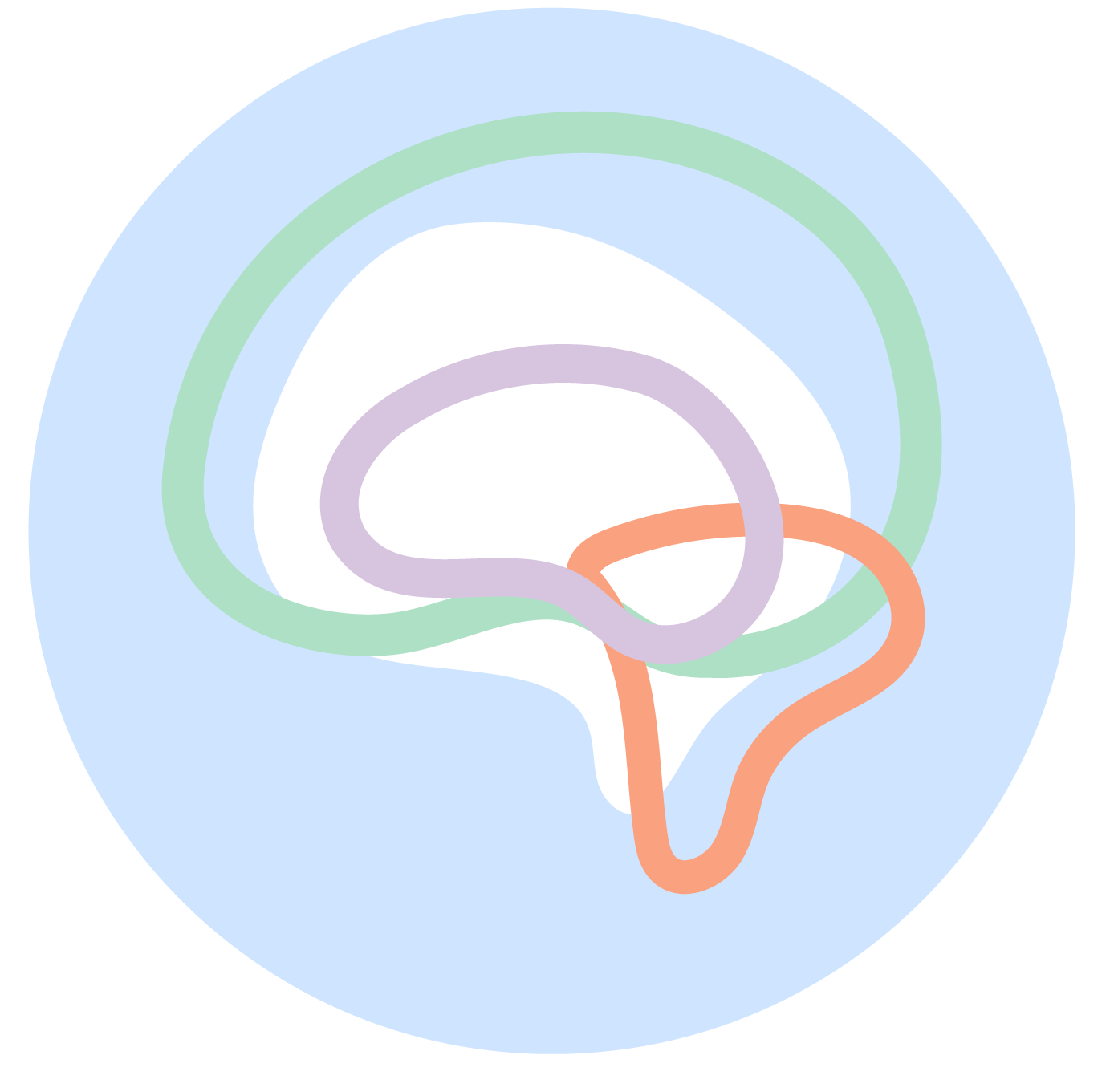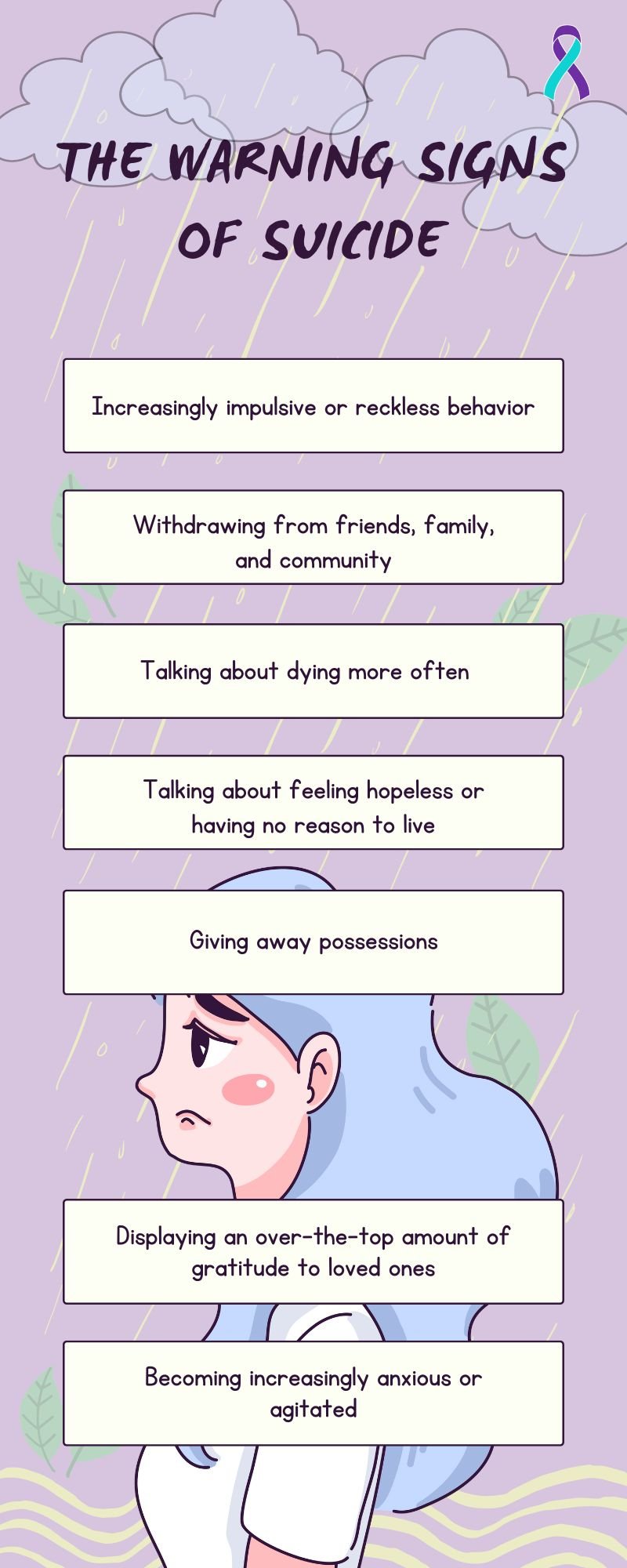A Guide for Suicide Awareness
In 2020, nearly 46,000 people took their own lives.
That's twice the number of homicides that happened that year.
Suicide is the second leading cause of death for children aged 10-14 years old
Many ideas about suicide might start off quite small but can build up over time and become much more menacing. You might find a friend giving up on projects quicker, or maybe it's a family member that references being worthless from time to time. Whatever it might be, it would be useful to have a guide on how you can spot behavior like this and connect it to suicide prevention. Here is that guide.
Risk Factors
When a person learns about someone who committed suicide, one of the first questions they ask is why? This question can be quite complex. Sometimes it’s many factors and other times it’s one huge problem that’s burdening them. It’s important to recognize what is troubling a person and whether or not they can properly cope with it.
In order to be more easily memorized, The CDC has defined four separate categories which are understood to increase suicide risk: Individual, relationships, community, and societal.
Individual Risk Factors
Previous suicide attempt
History of depression or other mental illnesses
Serious illnesses such as chronic pain
Access to firearms
Legal problems
Job or financial problems
Impulsive or aggressive tendencies
Current or prior history of adverse childhood experiences
General hopelessness
Violence victimization and/or perpetration
Relationship Risk Factors
Bullying
Family or loved one’s history of suicide
Loss of relationships
High conflict relationships
Social isolation
Community Risk Factors
Lack of access to healthcare
Suicide cluster in the community
Stress of acculturation
Community violence
Historical trauma
Discrimination
Societal Risk Factors
The stigma associated with help-seeking and mental illness
Easy access to lethal means of suicide among people at risk
Unsafe media portrayals of suicide
Warning Signs
While everyone deals with their troubles in their specific way, the general sign of worsening behavior can give you plenty of insight into the issues of a person. Some warning signs are quite universal and can be seen in many different people experiencing many different burdens.
Regardless, it’s estimated that 64% of suicide attempts are utterly impulsive. This is alarming. The best thing to do here is to watch for the warning signs and have serious talks with whoever needs the help. Here are a few warning signs common in many people to look out for:
Increasing alcohol or drug use
Behaving anxious or agitated
Impulsive or reckless behavior
Talking about feeling trapped or in unbearable pain
Talking about being a burden to others
Sleeping too little or too much
Withdrawing from friends, family, and community
Showing rage or talking about seeking revenge or general heightened aggression
Revealing extreme mood swings
Conversing about wanting to die or killing oneself
Looking for a way to kill oneself, such as searching online or obtaining a gun
Talking about feeling hopeless or having no reason to live
Most of these behaviors are relatively easy to spot and can be caught early on. However, some other ways of behaving can come across as inconspicuous to the normal person. These include:
Giving away possessions
Tying up loose ends, like organizing personal papers or paying off debts
Collecting and saving pills
Becoming more interested in knives or guns
Saying goodbye or displaying an over-the-top amount of gratitude towards friends and family
Remember, It’s better to be safe than sorry.
What to do if you are in crisis
Perhaps you’re the one experiencing a critical moment in your life. Things feel like they are going wrong, your mental health has been deteriorating, or you’re not sure how you can deal with your difficult emotions. Here are a few resources to help you out:
Call or text 988 to get connected with a certified crisis counselor
If you are uncomfortable using a phone, you can use your computer browser and head to this site to chat with a certified counselor: https://988lifeline.org/chat/
NAMI has some great resources to celebrate Suicide Prevention Awareness Month (SPAM): https://www.nami.org/Get-Involved/Awareness-Events/Suicide-Prevention-Awareness-Month-(SPAM)
Mental Health America has a beautifully abundant page of resources to help in many different crisis scenarios ranging from domestic violence, suicide prevention, sexual assault, and much more: https://mhanational.org/crisisresources
If you need access to different hotlines or want to find a psychologist to talk about long-term help, the American Psychological Association has you covered: https://www.apa.org/topics/crisis-hotlines
Closing
Suicide is preventable and all lives are valuable. When help is needed, help should be sought. You have the responsibility of taking care of yourself and the people around you. And remember…

